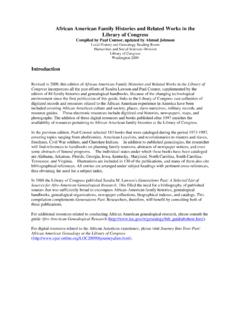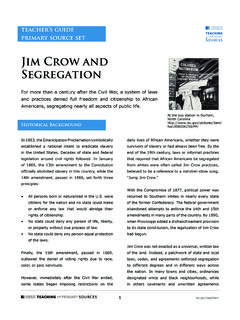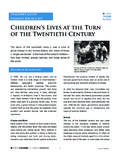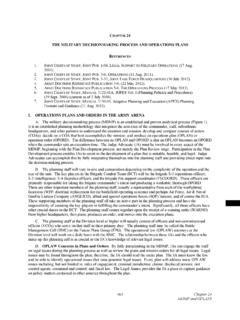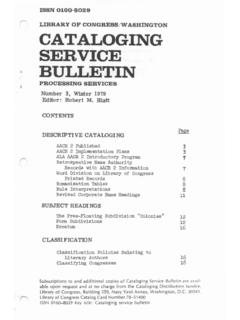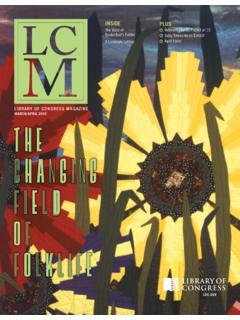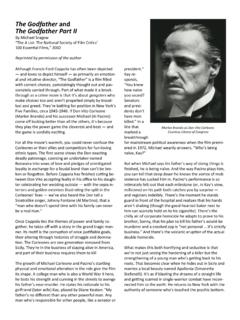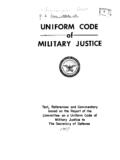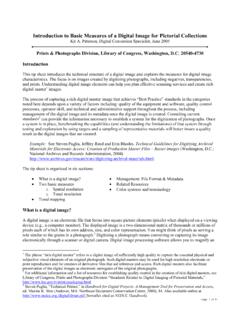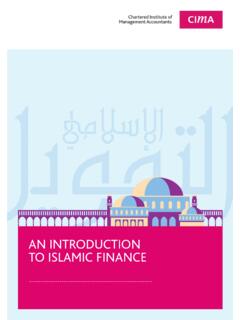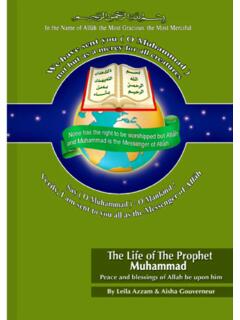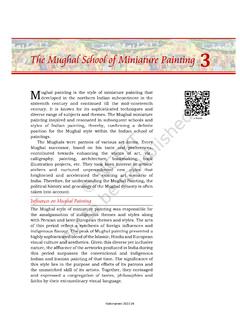Transcription of Country Profile: Afghanistan
1 Library of Congress Federal Research Division Country profile : Afghanistan , August 2008 Country profile : Afghanistan August 2008 Country Formal Name: Islamic Republic of Afghanistan (Dowlat-e Eslami-ye-Afghanestan). Short Form: Afghanistan . Term for Citizen(s): Afghan(s). Capital: Kabul. Major Cities: Herat (Hirat), Jalalabad, Kandahar (Qandahar), Kondoz (Kunduz), and Mazar-e Sharif. Independence: Afghanistan recognizes its independence day as August 19, the date in 1919 when the Country became fully independent of British rule.
2 Public Holidays: The date of celebration of Afghanistan s Muslim holidays varies because the Islamic calendar is 354 days rather than 365. The holidays in this category are the beginning of Ramadan, Eid al Adha (Feast of the Sacrifice, the end of Ramadan), Ashura (the martyrdom of Imam Hussein), and the birthday of the prophet muhammad . Holidays observed on fixed dates include Nawros (New Year s, on the vernal equinox), Victory Day (April 28), and Independence Day (August 19). Click to Enlarge Image Flag: The background of the Afghan flag is three equal vertical sections of black, red, and green from left to right.
3 In the center of the flag in yellow is the national coat of arms, which portrays a mosque with a banner and a sheaf of wheat on either side. In the upper-middle part of the insignia are the lines There is no Click to Enlarge Image God but Allah and muhammad is his prophet and Allah is Great, together with a rising sun. The word Afghanistan and the year 1298 (the Muslim calendar equivalent of the year of independence, 1919) are located in the lower part of the insignia. HISTORICAL BACKGROUND The Pre-Islamic Period: Archaeological evidence indicates that urban civilization began in the region occupied by modern Afghanistan between 3000 and 2000 The first historical documents date from the early part of the Iranian Achaemenian Dynasty, which controlled the region from 550 until 331 Between 330 and 327 , Alexander the Great defeated 1 Library of Congress Federal Research Division Country profile .
4 Afghanistan , August 2008 the Achaemenian emperor Darius III and subdued local resistance in the territory that is now Afghanistan . Alexander s successors, the Seleucids, continued to infuse the region with Greek cultural influence. Shortly thereafter, the Mauryan Empire of India gained control of southern Afghanistan , bringing with it Buddhism. In the mid-third century , nomadic Kushans established an empire that became a cultural and commercial center. From the end of the Kushan Empire in the third century until the seventh century, the region was fragmented and under the general protection of the Iranian Sassanian Empire.
5 The Islamic and Mongol Conquests: After defeating the Sassanians at the Battle of Qadisiya in 637, Arab Muslims began a 100-year process of conquering the Afghan tribes and introducing Islam. By the tenth century, the rule of the Arab Abbasid Dynasty and its successor in Central Asia, the Samanid dynasty, had crumbled. The Ghaznavid Dynasty, an offshoot of the Samanids, then became the first great Islamic dynasty to rule in Afghanistan . In 1220 all of Central Asia fell to the Mongol forces of Genghis Khan. Afghanistan remained fragmented until the 1380s, when Timur consolidated and expanded the existing Mongol Empire.
6 Timur s descendants ruled Afghanistan until the early sixteenth century. The Pashtun Rulers: In 1504 the region fell under a new empire, the Mughals of northern India, who for the next two centuries contested Afghan territory with the Iranian Safavi Dynasty. With the death of the great Safavi leader Nadir Shah in 1747, indigenous Pashtuns, who became known as the Durrani, began a period of at least nominal rule in Afghanistan that lasted until 1978. The first Durrani ruler, Ahmad Shah, known as the founder of the Afghan nation, united the Pashtun tribes and by 1760 built an empire extending to Delhi and the Arabian Sea.
7 The empire fragmented after Ahmad Shah s death in 1772, but in 1826 Dost Mohammad, the leader of the Pashtun Muhammadzai tribe, restored order. The Great Game: Dost Mohammad ruled at the beginning of the Great Game, a century-long contest for domination of Central Asia and Afghanistan between Russia, which was expanding to the south, and Britain, which was intent on protecting India. During this period, Afghan rulers were able to maintain virtual independence, although some compromises were necessary. In the First Anglo-Afghan War (1839 42), the British deposed Dost Mohammad, but they abandoned their Afghan garrisons in 1842.
8 In the following decades, Russian forces approached the northern border of Afghanistan . In 1878 the British invaded and held most of Afghanistan in the Second Anglo-Afghan War. In 1880 Abdur Rahman, a Durrani, began a 21-year reign that saw the balancing of British and Russian interests, the consolidation of the Afghan tribes, and the reorganization of civil administration into what is considered the modern Afghan state. During this period, the British secured the Durand Line (1893), dividing Afghanistan from British colonial territory to the southeast and sowing the seeds of future tensions over the division of the Pashtun tribes.
9 Abdur Rahman s son Habibullah (ruled 1901 19) continued his father s administrative reforms and maintained Afghanistan s neutrality in World War I. Full Independence and Soviet Occupation: In 1919 Afghanistan signed the Treaty of Rawalpindi, which ended the Third Anglo-Afghan War and marks Afghanistan s official date of independence. In the interwar period, Afghanistan again was a balancing point between two world powers; Habibullah s son Amanullah (ruled 1919 29) skillfully manipulated the new British-Soviet rivalry and established relations with major countries.
10 Amanullah introduced his 2 Library of Congress Federal Research Division Country profile : Afghanistan , August 2008 Country s first constitution in 1923. However, resistance to his domestic reform program forced his abdication in 1929. In 1933 Amanullah s nephew Mohammad Zahir Shah, the last king of Afghanistan , began a 40-year reign. After World War II, in which Afghanistan remained neutral, the long-standing division of the Pashtun tribes caused tension with the neighboring state of Pakistan, founded on the other side of the Durand Line in 1948.
